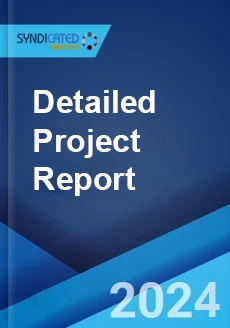
Postmenopausal Vaginal Atrophy Drugs Market: Global Industry Analysis, Market Size, Share, Trends, Application Analysis, Growth and Forecast, 2023-2028
“Postmenopausal Vaginal Atrophy Drugs Market: Global Industry Analysis, Market Size, Share, Trends, Application Analysis, Growth and Forecast, 2023-2028” provides a deep and thorough evaluation of the Postmenopausal vaginal atrophy drugs market by drug form (vaginal gels, creams, tablets, rings, and patches); by therapy type (estrogen-based drugs, non-estrogen-based drugs ); and by geography (North America, Europe, Asia-Pacific, Latin America and Middle East & Africa). Postmenopausal vaginal atrophy refers to the deterioration of vaginal tissues caused due to the low levels of estrogen production in the body after menopause. Some of the common symptoms include dryness, irritation, itching, dyspareunia, and vaginal discharge. It can be treated using various specific drug therapies, including estrogen- and non-estrogen-based therapies.
The global market is driven by the growing awareness among the masses regarding the available drugs and treatment solutions for postmenopausal vaginal atrophy. Furthermore, non-estrogenic therapies are gaining widespread preference over systemic estrogen treatments, thereby creating a positive outlook for the market. The continual improvements in the delivery of medical facilities and the rising healthcare expenditure are some of the other factors contributing to the market growth.
Segmentation by Drug Form:
- Vaginal Gels
- Creams
- Tablets
- Rings
- Patches
Segmentation by Therapy Type:
- Estrogen-Based Drugs
- Non-Estrogen-Based Drugs
Segmentation by Region:
- Asia-Pacific
- Europe
- Latin America
- North America
- Middle East & Africa
Competitive Landscape:
- Teva Pharmaceuticals
- Shionogi
- Pfizer
- Novo Nordisk
- Allergan
The price margins for the products along with the various success and risk factors for manufacturers have also been covered in the report. Moreover, in order to determine market attractiveness, the report analyses the Postmenopausal vaginal atrophy drugs industry along the parameters of the porter’s five forces model. This model examines the degree of competition in the Postmenopausal vaginal atrophy drugs industry by analysing the threat posed by new entrants and substitutes, and the bargaining power of suppliers and buyers. Swot analysis of the market has also been presented in the report which highlights the strengths, weaknesses, opportunities and threats pertaining to the Postmenopausal vaginal atrophy drugs industry. Furthermore, the value chain analysis of the Postmenopausal vaginal atrophy drugs industry has also been covered in the report. This comprises of all the activities in the value chain, such as the procurement of various raw materials, manufacturing and sales of the products, and their distribution.
Highlights of The Postmenopausal Vaginal Atrophy Drugs Market
- Historical and current scenario
- Trends and developments
- Market forecast
- Price analysis and forecast
- Porter’s five forces analysis
- SWOT analysis
- Value chain analysis
The report is a result of exhaustive primary and secondary research undertaken by analysts having years of experience in the Postmenopausal vaginal atrophy drugs industry. All the qualitative and quantitative aspects of the industry have been covered and the collected data has been analysed and presented in the form of easily comprehensible charts, graphs and tables.
Purchase Options
Ask For Customization
Personalize this research
Triangulate with your own data
Get data as per your format and definition
Gain a deeper dive on a specific application, geography, customer or competitor
Any level of personalization
Get in Touch
Call us on
US: +1-213-316-7435
Uk: +44-20-8040-3201
Drop us an email at
sales@syndicatedanalytics.com